|
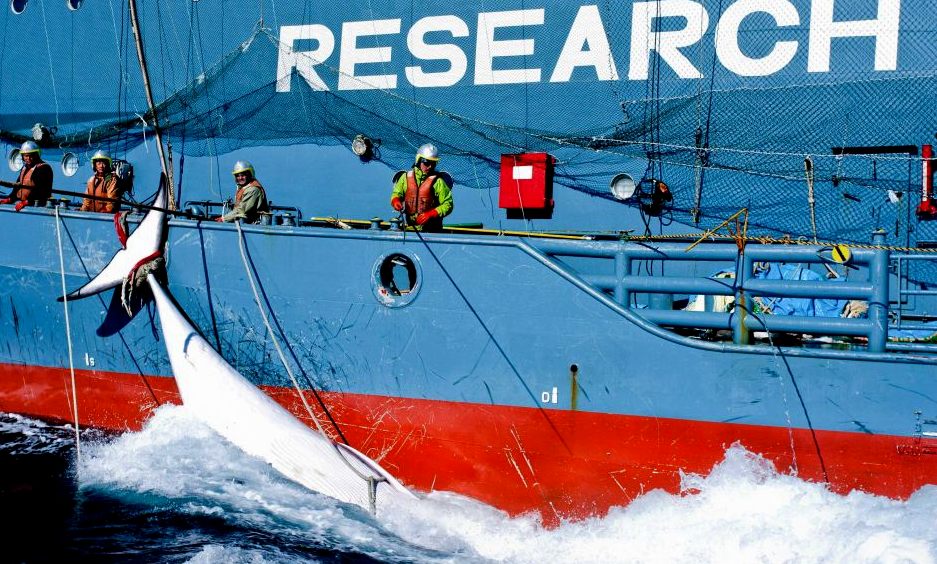
AUSTRALIA
18 NOV 2015 - The Federal Court has fined Japanese whaling company Kyodo $1 million for hunting whales within an Australian whale sanctuary, however there is little chance it will ever be paid.
Humane Society International (HSI) with help from the Environmental Defender's Office brought the case against Japanese company Kyodo Senpaku Kaisha.
They provided evidence of four occasions the whaling company caught minke whales within waters off Antarctica that are designated as a whale sanctuary by Australian environmental law.
Justice Jayne Jagot made a quick decision, finding the company guilty on all counts and fining them $250,000 for each occasion.
The company was not represented in court.
"We were surprised at the speed of things," Humane Society chief executive Michael Kennedy said.
"We thought we'd be in court all day. We thought we wouldn't get a decision until January sometime."
The case is the latest skirmish in a long-running legal battle against the Japanese whalers.
In 2008, HSI successfully took Kyodo to court where it was decided the whale hunt was against Australian law.
However the injunction against further whaling had no effect.
"[Kyodo] simply did not recognise the injunction; they did not recognise the law, because they don't recognise the Australian territory in the Southern Ocean," Mr Kennedy said.
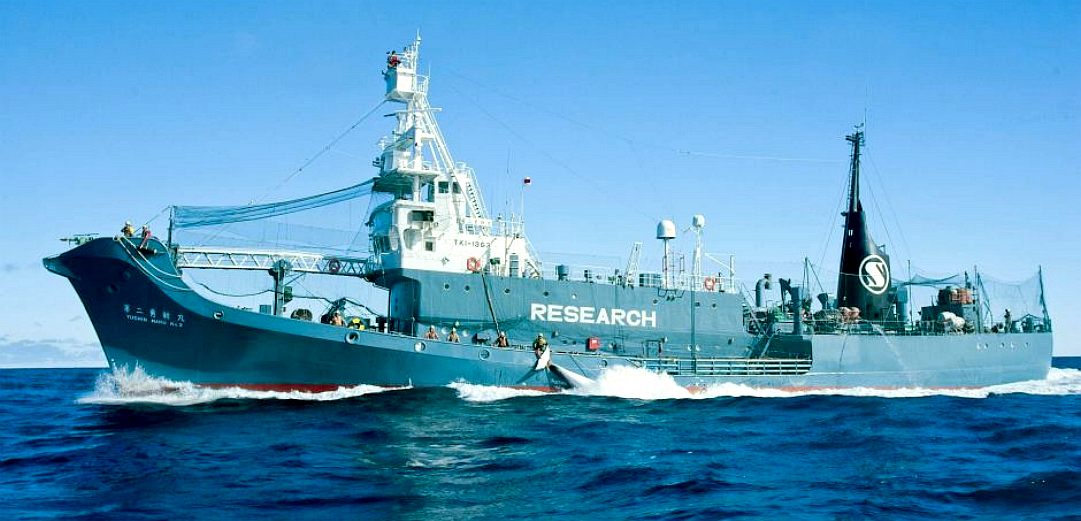
The Australian Government won a case at the International Court of Justice in 2014 that found the Japanese whaling program was not "scientific" as they had always claimed.
The latest case argued that continued whaling was not only a breach of environmental law, but also showed contempt of the Federal Court.
Don Rothwell professor of law at the Australian National University said it was important to continue the battle as a matter of legal principle, but the court victory would likely also be ignored by the whalers.
"Successive Australian governments of both persuasions have declined to give effect to these relevant laws — notwithstanding the order of the courts," he said.
"The reason for that is they well know that if any attempt is made by Australia to arrest a Japanese whaling vessel or actually effectuate these orders, that will immediately provoke an international dispute with Japan.
"It won't necessarily be a dispute with respect to whaling but is is a dispute that will go to squarely to the legitimacy of Australia's claim over Antarctica and that is a dispute that Australia would seek to avoid.
"It needs to be acknowledged there is a significant question mark about the strength of Australia's claim over 42 per cent of the Antarctic continent," Professor Rothwell said.
Mr Kennedy said regardless of whether the company abides by the court's ruling, he is happy with the outcome.
"Japan always claimed it was doing its work legally. Well our court case in 2004, the ICJ in 2014, and now today proves that nothing they do in our view is at all legal," he said.
"This pressure is a thing that has to be kept up. At some point they must crack maybe this will be the
final
straw. That's what we're hoping."
 Sara
Phillips - ABC environmental reporter
Sara
Phillips - ABC environmental reporter
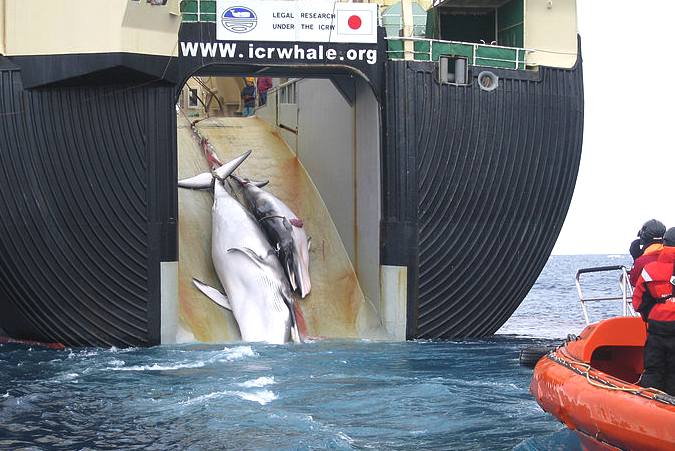
We
do not believe that genuine cetacean research would warrant the operation
of a huge factory ship like the Nisshin Maru, and what happens to the
whales after experimentation?
The 8,030-ton vessel MV Nisshin Maru (日新丸?) is the primary vessel of the Japanese whaling
fleet. It is a converted stern trawler and is the world's only whale factory ship. It is also the largest member, and flagship of the seven-member whaling fleet, headed by research leader Shigetoshi
Nishiwaki, and is based in Japan in Shimonoseki harbor. The ship is owned by Tokyo-based company Kyodo Senpaku Kaisha Ltd and is contracted by the Institute of Cetacean Research.
2007 Antarctic voyage
A major fire in the ship's processing factory broke out on 15 February 2007 while in Antarctic waters. The resulting damage caused the ship to be temporarily disabled, all while continuing to carry approximately 1,000 tons of oil. This incident took place within the
New Zealand Search and Rescue Region. One crew member was killed in the fire.
Citing environmental concerns, specifically the disabled ship's proximity to Cape
Adare, Antarctica and the world's largest Adelie Penguin rookery, New Zealand Conservation Minister Chris Carter joined international citizens' groups in urgently requesting that the ship be towed away. Japan's Institute of Cetacean Research
(ICR), which administers the ship with the Kyodo Senpaku Kaisha, declined offers of a tow from the Greenpeace ship MV Esperanza, which had been nearby and monitoring the situation since 17 February. On 28 February, the ICR released a statement on its decision to cut short its Antarctic whale hunt for 2006/2007 due to unrecoverable equipment, and the Nisshin Maru departed for Japan.
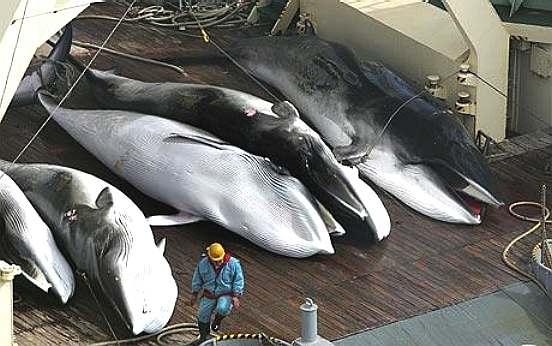
Other incidents
The Nisshin Maru and Greenpeace's MV Arctic Sunrise collided in December 1999 and in January 2006. In 2006 both ships claimed to have been rammed by the other, and the ICR posted video footage to support its version of the incident. Greenpeace responded that the waves emanating from the MV Arctic Sunrise in the video support Greenpeace's contention that its vessel had its engines in reverse; Greenpeace also claimed the location of cloud formations in the background of the ICR video indicate the MV Nisshin Maru was turning into the Greenpeace ship at the time of collision.
Sea Shepherd claimed its president Paul Watson was shot by someone on the Nisshin Maru during a confrontation with the MY Steve Irwin off Antarctica in 2008. He was wearing a bulletproof vest and was uninjured. An ICR spokesman acknowledged that seven flashbangs were thrown, but stated that "no gunshots of any kind" were fired.
In March 2011, the Nisshin Maru returned early from operations in the Southern Ocean and immediately began assisting in disaster relief efforts following the 2011 Tōhoku earthquake and tsunami, transporting food, fuel, and other supplies to areas devastated by the catastrophe.
In February 2013, the Nisshin Maru was involved in a multiple-ship collision, colliding with the Sea Shepherd vessels the Steve Irwin, the Bob Barker, and the Sam Simon, as well as the whaler's refueling ship, the Sun Laurel. The Bob Barker was damaged and issued a mayday. The Sun Laurel's
lifeboats were also damaged due to the collision.
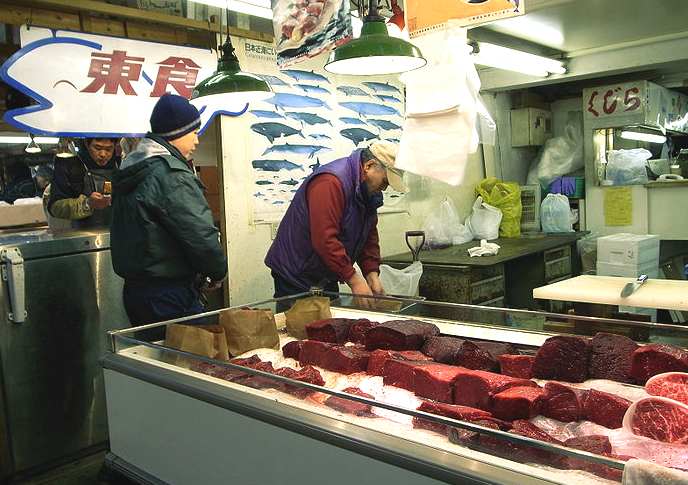
This
was a fish market in Tokyo a few years back. We wonder where all the fresh
whale meat is coming from. Whaling is of course illegal unless for
research purposes. Perhaps they are researching public tastes and
preferences. If that is true, then this experiment has been going on a
long time.
ROAD
(OCEAN)
RAGE - By Captain Paul Watson
The captain of the Japanese factory ship Nisshin Maru lost his temper, and unfortunately road rage with an 8,000 ton ship in remote waters amongst
icebergs and ice packs can be somewhat intimidating, as we all learned very dramatically today.
Where to begin?
I don’t think we have ever had a more eventful few hours in the nine years we have been opposing the whaling in the Southern Ocean Whale Sanctuary and certainly there has never been a day when all of our ships were rammed one after another. It is also the first time we have ever been rammed by the Nissin Maru, and to top it all off, the Japanese factory ship four times rammed and damaged their own supply tanker, the Sun Laurel.
I am sure the Japanese will justify the ramming of four ships on the high seas as accidental, after all nothing down here in the Southern Whale Sanctuary ever seems to be their fault.
But how did this all begin?
It began when the Sun Laurel deliberately ventured south of Sixty Degrees, entering the Antarctic Treaty Zone with a cargo of Heavy Fuel Oil (HFO) for the Nisshin Maru. It is illegal to bring HFOs into the protected waters of Antarctica, and also illegal to transfer heavy fuel oil to another ship.
The refueling operation was planned to happen yesterday but the three Sea Shepherd ships, the Sam Simon, the Bob Barker and the Steve Irwin, had taken up positions around the Sun Laurel to block any approach by the Nisshin Maru.
At 0230 Hours, in darkness, the Nisshin Maru and the Panamanian-registered tanker Sun Laurel ventured into a thick ice pack in an attempt to shake off the Sea Shepherd ships. This was not a responsible move. The Sun Laurel is not an ice class vessel and has no business taking such a dangerous cargo into an ice pack.
The Sea Shepherd ships held their position, making it difficult for the Nisshin Maru to come alongside their tanker.
The Sun Laurel was advised that they could refuel the Nisshin Maru north of Sixty degrees South. The Nisshin Maru insisted, however, that the factory ship be refueled illegally some 360 miles south of Sixty Degrees.
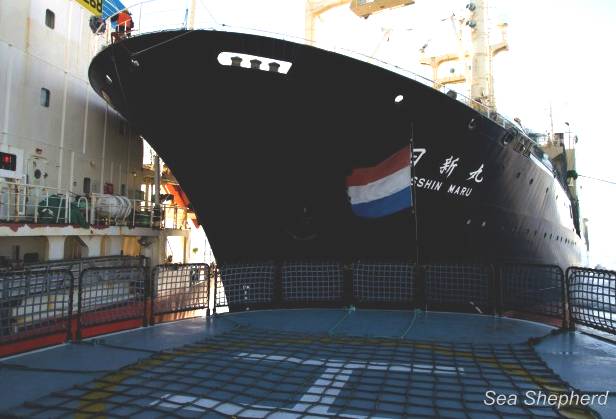
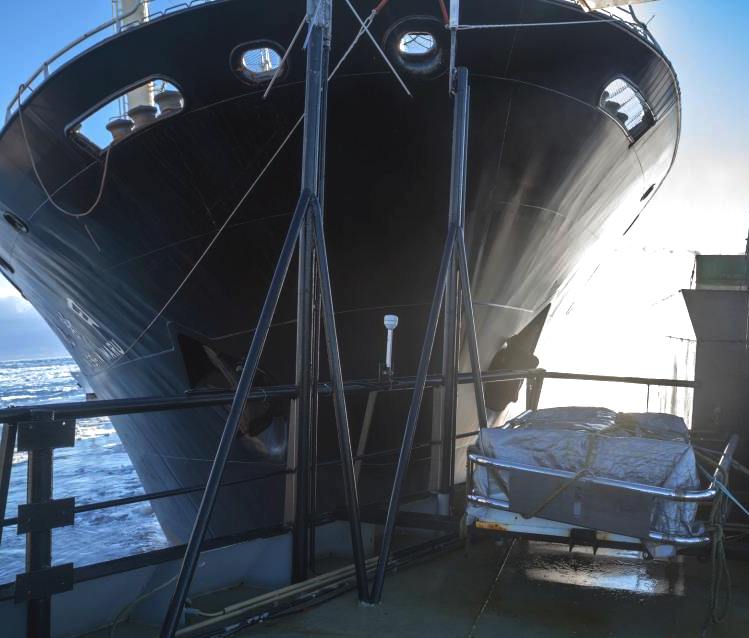
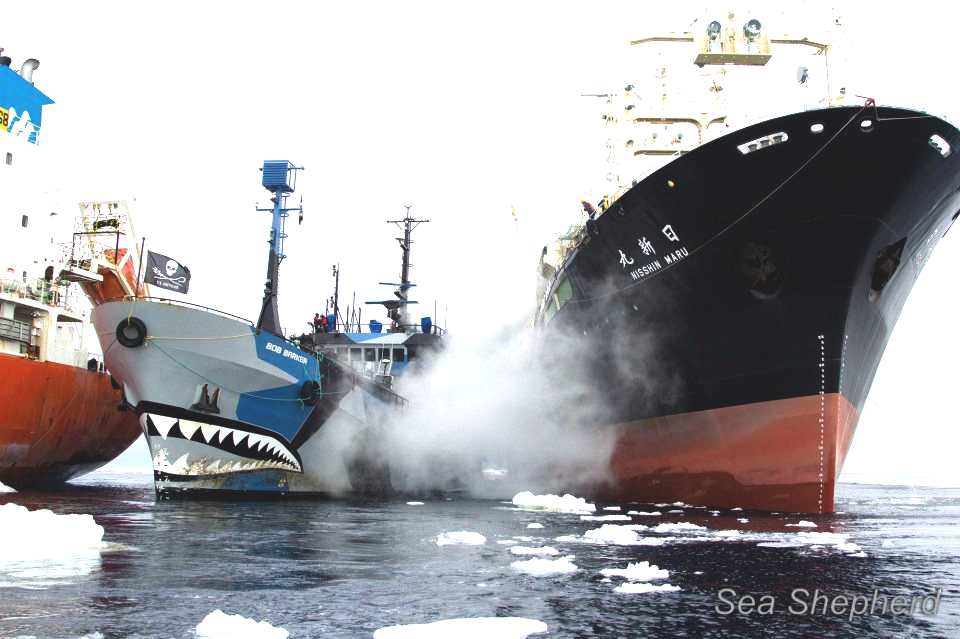
The
obviously aggressive acts of the Nisshin Maru, to include the sinking of
the Ady Gill, surely call for a review of peaceful tactics, to at least
include some kind of sting that will have the effect of dissuading the
Japanese whalers from putting the lives of peaceful protesters at risk. Is
there such a thing as a citizens arrest on the high seas. Anyone for
dodgems? One of our favourite fairground rides.
At 1020 Hours the Nisshin Maru moved closer to the stern of the Sun Laurel as the three Japanese harpoon vessels began to circle with their water cannons shooting towards the Sea Shepherd ships. They were joined by a fourth Japanese vessel, the Shonan Maru #2, their armed security ship, the same ship that had rammed and destroyed the New Zealand-flagged Ady Gil in 2010.
The Nisshin Maru moved in still closer, with three harpoon vessels closing in on the port quarter of the Steve Irwin.
At 1050 Hours, with the Sun Laurel pushing through thick ice, the Nisshin Maru shortened the distance between their bow and the stern of the Steve Irwin.
The Nisshin Maru kept edging closer in an effort to intimidate the Sea Shepherd Ships and it was indeed intimidating. The Nisshin Maru towered above our ships at ten times the size.
At 1227 Hours, the Bosun on the tanker Sun Laurel warned the Nisshin Maru to stop because they were dangerously close, but the factory ship continued to move closer, pinching the Steve Irwin between their massive hull and the side of the tanker. The Bob Barker then moved into position to defend the Steve Irwin and attempted to block the Japanese poaching ship.
As this was happening, crew on the Nisshin Maru were throwing concussion grenades and hitting both the Bob Barker and the Steve Irwin with powerful water cannons. At 12:56 Hours, the Nisshin Maru came up behind the Steve Irwin, hitting the
Sea Shepherd vessel twice, once on the port stern, and again on the port side, damaging the helicopter deck and pushing the Steve Irwin towards the Sun Laurel.
The Bob Barker moved into the breach to allow the Steve Irwin to get out of the way of the Nisshin Maru’s massive bow.
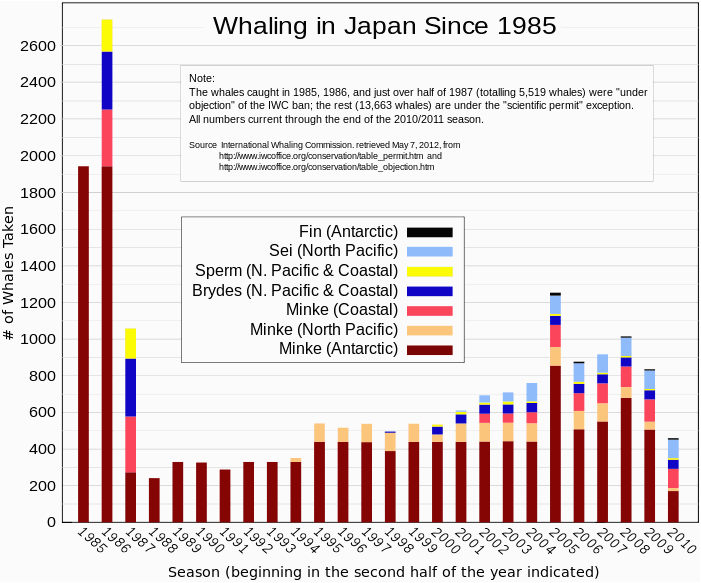
The Bob Barker then came under attack from concussion grenades and high-powered water cannons, causing a huge cloud of steam to engulf half the ship and drift over to the Nisshin Maru, who then directed their water cannons to flood the exhaust ports of the main engine.
Co-Campaign Leader Bob Brown had ordered that the Sea Shepherd crew not retaliate with stink bombs, paintballs or propeller-fouling lines. The crew complied with those instructions and thus could take no measures to dissuade the attack of the Nisshin Maru. They could only to hold their ground to the best of their ability.
The Nisshin Maru moved to cut off the Bob Barker and instead struck the stern of the tanker Sun Laurel. They hit it four times, crushing a
liferaft and damaging the davit in for their primary lifeboat. They also inflicted damage on the Sun Laurel’s superstructure and hull.
“This kind of reckless maneuvering around a fully laden tanker is unthinkable,” said Bob Barker 1st Officer Carlos Bueno, 47, of Spain. “The Nisshin Maru captain was so intent on hitting the Bob Barker that he was willing to damage the tanker and risk an oil spill to get to us. It was incredible.”
The Nisshn Maru opened the gap between the Sun Laurel and the Bob Barker, and slammed into the starboard side of the
Sea Shepherd Ship while still scraping the port side of the tanker Sun Laurel.
The massive bow of the Nisshin Maru towered over the decks of the Bob Barker. From my vantage point on the other side of the Sun Laurel, I could see the Bob Barker heeling hard over to port at forty five degrees as the imposing black bow of the Nisshin Maru toppled the aft mast, destroying the radar and crushing the running lights. The monkey deck was buckled and the helicopter deck twisted as the Bob Barker’s engineers reported water pouring into the engine room.
Suddenly the Bob Barker lost all power. Captain Peter Hammaerstedt of Sweden, 28, could hear the metal ripping on the deck above the wheel-house as the aft mast was toppled and the ship began to heel over.
“He was going to roll us, the Nisshin Maru was pushing and we were helpless,” said Captain Hammarstedt. “I tried to keep my footing and I was able to issue a May Day. If he had pushed any more, his massive weight would certainly have capsized us. But she broke off and the huge anchor swung against us like a wrecking ball.”
“It was a frightening experience,” added Oona Layolle of France, 29, the 2nd Officer on the Bob Barker. “Another foot lower and the anchor would have torn into the wheelhouse. Instead it ripped through the starboard running lights crushing the glass and steel. The monkey deck looked like a bomb had hit it.”
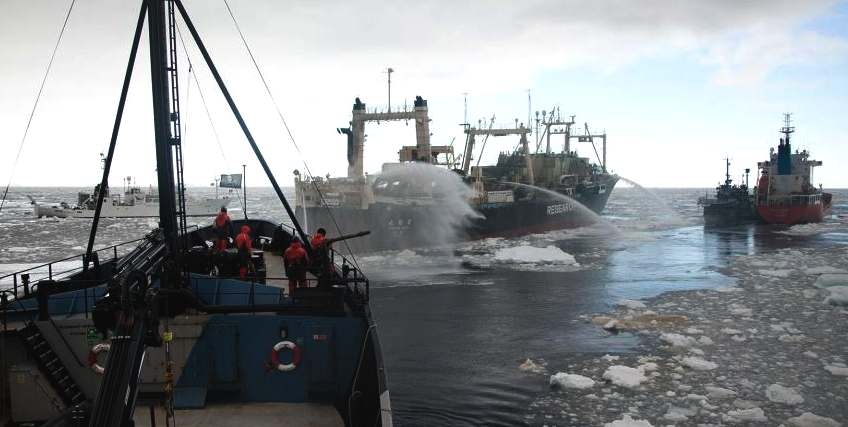
The Nisshin Maru backed off when they heard the distress call and the Bob Barker immediately began damage control. The flow of water was halted within 15 minutes and the engineers brought power back on within a half hour, giving the ship the ability to get underway. The radar and starboard running lights were destroyed.
“It was unbelievable,” said Steve Irwin Bosun’s Mate, Sonia Hyppänen of Finland, 29. “The Nisshin Maru rolled over the Bob Barker like a tank crushing a car after they rammed their own tanker. This has been the most irresponsible seamanship that I have ever seen. They are being aggressively reckless and they are acting like there will be no consequences for their actions.”
And there probably will not be any consequences. In 2010, the Shonan Maru #2 deliberately rammed and destroyed the New Zealand-flagged trimaran Ady Gil. They then refused to cooperate with New Zealand investigators and were not penalized.
The Nissin Maru had earlier attempted to intimidate the Australian-flagged ship Sam Simon. They struck the ship on the stern and through their loudspeakers had the audacity to order the Australian ship away from Australian Territorial waters, “by order of the Government of
Japan.”
“It is as if they are declaring sovereignty over our territorial waters,” said Steve Irwin Quartermaster Elissa Sursara, 25, of the Gold Coast of
Queensland. (We think misquoted, actually Ellie Elissa Sursara)
During the collision, one of the Filipino seaman on the Sun Laurel tossed a bottle to one of the Sea Shepherd crew in an inflatable small boat.
The note read: “To Research ship, Please: ‘May Day’ ‘Help’ All crew did not know to this Antarctic trip. So all crew don’t like to supply this fishing vessels. We cannot use telephone so we cannot speak to IMO. Please you as soon as possible take action. Thank you.”
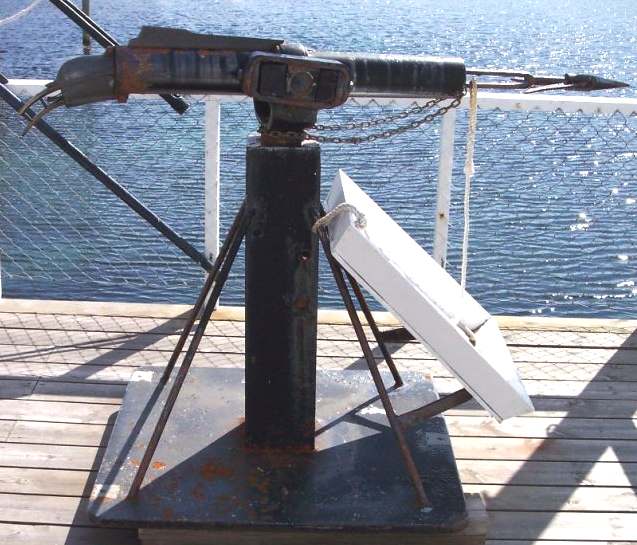
They also included a note with a directive from their Captain saying that they could not telephone from their ship from January 20 to February 28th. The crew had many young, scared seamen, who did not know they were going to Antarctica, and wanted no part of the Japanese Whaling Fleet.
Some of the crew on the Bob Barker tossed 6 Sea Shepherd crew T-shirts to the Sun Laurel crew and cheered when the Filipino crew put them on and gave the Bob Barker thumbs up.
All three Sea Shepherd ships had held their positions and the illegal refueling of the Nisshin Maru was prevented.
The evening came to a close as the Sun Laurel headed north, away from the Nisshin Maru with the Sea Shepherd ship Sam Simon escorting them to safety.
The Bob Barker and the Steve Irwin continue to tail the Nisshin Maru as it heads west. All the harpoon vessels and the government security vessel Shonan Maru #2 have scattered, and the entire whaling fleet looks to be in complete disarray.
Will they try again tomorrow?
Possibly, but most likely not. By all appearances the Sun Laurel is acting like they have had enough and may be heading home.
The best news of all came with the announcement that the Institute for Cetacean Research has called a temporary halt to all whaling operations.
It may well be over for this season, and hopefully we will not have to return next season if the Japanese whalers decide to finally respect the integrity and the sanctity of the Southern Ocean Whale Sanctuary.
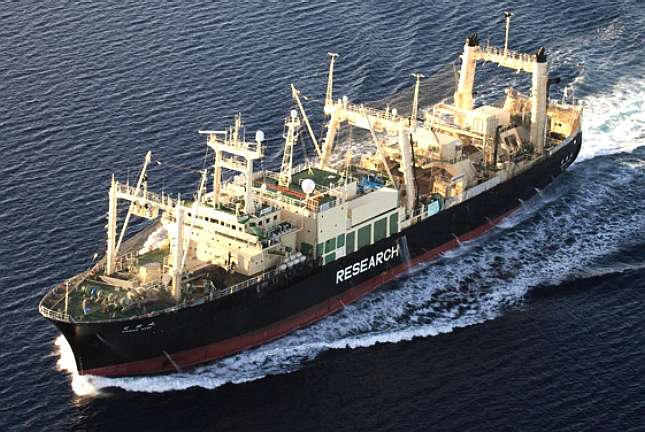
|
|
Name:
|
Nisshin Maru (Previously Chikuzen Maru)
|
|
Owner:
|
Kyodo Senpaku Kaisha, Ltd.
|
|
Operator:
|
Institute
of Cetacean Research
|
|
Port of registry:
|
Japan
|
|
Builder:
|
Hitachi Zosen Corporation Innoshima Works
|
|
Laid down:
|
1987
|
|
Launched:
|
Unknown
|
|
In service:
|
Active as of 2013
|
|
Homeport:
|
Shimonoseki Harbor, Tokyo, Japan
|
|
Identification:
|
IMO
number: 8705292, Call
sign: JJCJ, MMSI:
431683000
|
|
Status:
|
Docked in port as of August 2013.
|
|
General
characteristics
|
|
Type:
|
Whaler
|
|
Tonnage:
|
8,030 gross
register tons (GRT)
|
|
Length:
|
129.58 m (425 ft 2 in)
o/a
|
|
Beam:
|
19.4 m (63 ft 8 in) (moulded)
|
|
Draft:
|
11.7 m (38 ft 5 in)
|
|
Propulsion:
|
5,383 kw (7315 bhp)
|
|
Speed:
|
Max: 15.5 knots (28.7 km/h)
Cruise: 13.5 knots (25.0 km/h)
|
|
New IMO regulations
New regulations from the United Nations International Maritime Organization which took effect in July 2011 have made it illegal for the MV Nisshin Maru to operate while using heavy oil below 60 degrees south. This will most likely increase the cost of operating in the Southern Ocean. The new rules prohibit ships using heavy oil in the Antarctic treaty system area due to the risk to wildlife in the event of an
oil
spill.
Other appearances
The MV Nisshin Maru, is featured in Ship Simulator Extremes, along with the Kyo Maru # 1 and the Greenpeace vessel Esperanza, along with its outboard inflatable boats, and
RIBs. The Nisshin Maru was the main setting for the movie Drawing Restraint 9
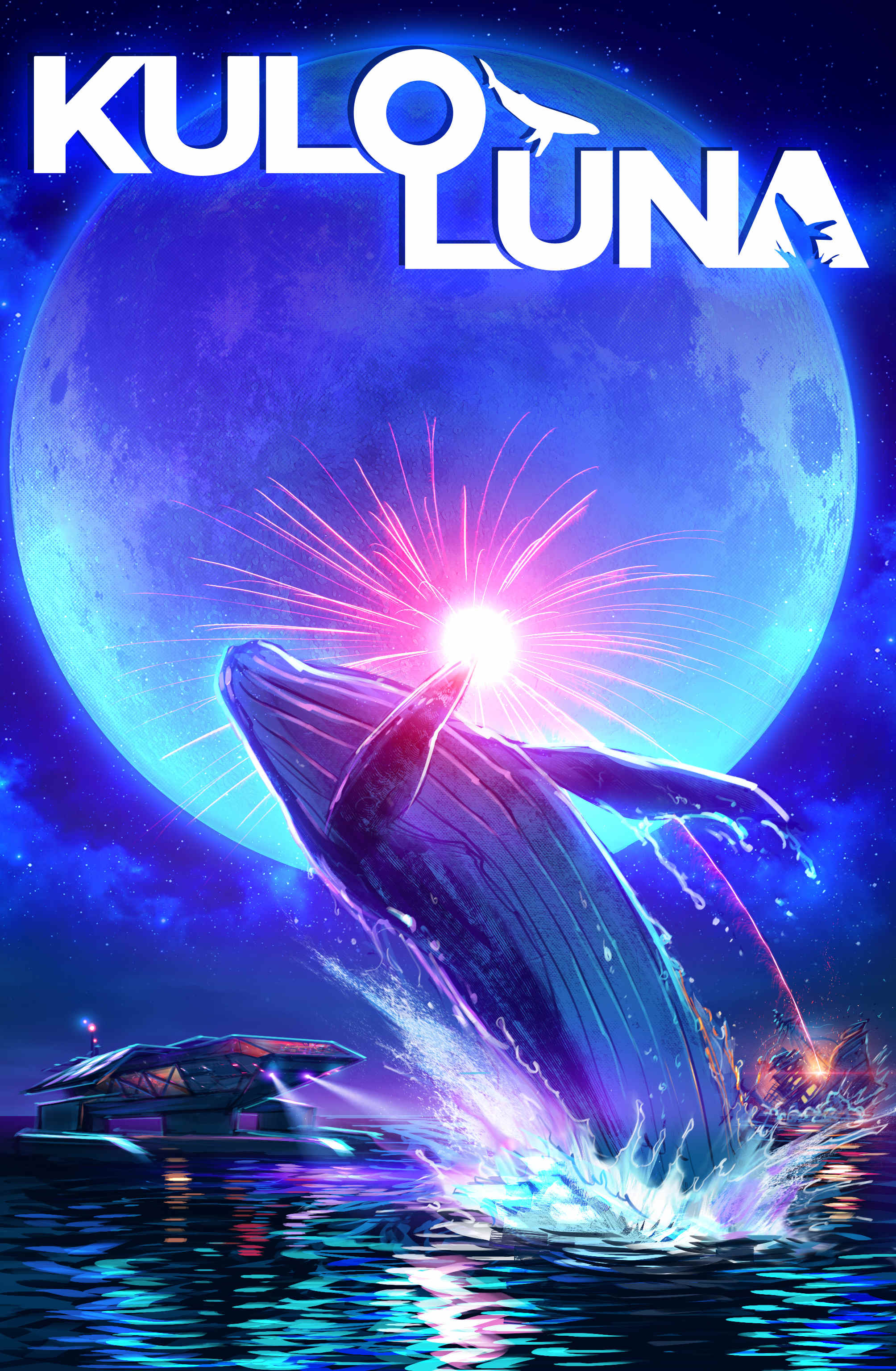
A
whale of a tale, just waiting to be told. Click on the picture to read the
draft screenplay.
ACIDIFICATION
- ADRIATIC
- ARCTIC
- ATLANTIC - BALTIC
- BAY BENGAL - BERING
- CARIBBEAN - CORAL - EAST
CHINA
ENGLISH CH
-
GOC - GULF
GUINEA - GULF
MEXICO
- INDIAN
-
IOC
-
IRC - MEDITERRANEAN -
NORTH SEA - PACIFIC
- PERSIAN GULF - SEA
JAPAN
STH
CHINA - PLASTIC
- PLANKTON - PLASTIC
OCEANS - SEA
LEVEL RISE - UNCLOS
- UNEP
WOC
- WWF
AMAZON
- BURIGANGA - CITARUM - CONGO - CUYAHOGA
-
GANGES - IRTYSH
- JORDAN - LENA -
MANTANZA-RIACHUELO
MARILAO
- MEKONG - MISSISSIPPI - NIGER - NILE - PARANA - PASIG - SARNO - THAMES
- YANGTZE - YAMUNA - YELLOW
LINKS
& REFERENCE
http://www.telegraph.co.uk/earth/wildlife/7825328/Japan-accused-of-bribing-small-nations-for-whaling-help.html http://gcaptain.com/japanese-lose-temper-antarctic/
http://en.wikipedia.org/wiki/Nisshin_Maru
ABC
Australian news
2015 November 18 federal court hands Kyodo $1m fine to Japanese whalers http://www.abc.net.au/news/2015-11-18/federal-court-hands-kyodo-$1m-fine-to-japanese-whalers/6952508
http://www.dimdex.com/en/warship-display.aspx http://www.npp.com.qa/ http://en.wikipedia.org/wiki/Qatar_Armed_Forces
http://www.asdwire.com/press-release-8988/ http://www.maritimeaustralia.com.au/ http://www.pacific2013.com.au/innovation-awards/index.html Kestrel
Marine's Sentient object recognition
system Maritime
Australia Limited Pacific
2013 Awards tattoos
fansshare.com
sectasaur_antarctic_melt_john_storm_adventure_book_by_jameson_hunter
|













